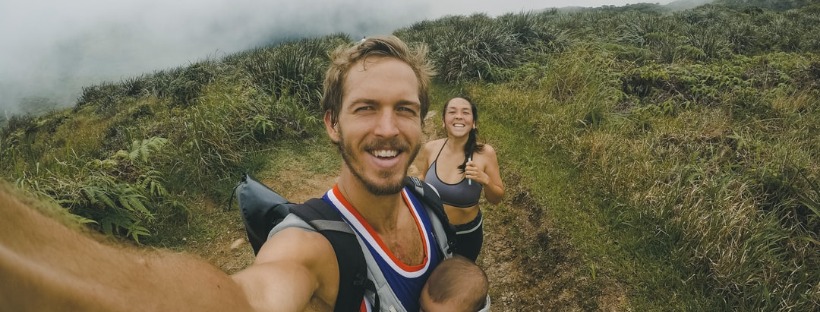TED history videos are a great way to learn more about history without having to sit and read a book (although if that’s your thing, try this list of medieval history books for beginners). There are some fantastic speakers, thought-provoking techniques and even a few laughs. You may associate TED talks with motivational speakers or business advice, but there are actually TED videos on almost every subject, and history is no exception.
I’ve gathered together ten of my favorite TED history videos. Between them, they cover the whole scope of human history, from the earliest cave paintings to the modern day. Each of these talks is well-delivered and full of original ideas. I hope that you enjoy all of them!
Why are these 32 symbols found in ancient caves all over Europe?
Contents
- Why are these 32 symbols found in ancient caves all over Europe?
- The History of Our World in 18 Minutes
- Why Public Beheadings Get Millions of Views
- Finding the Story in the Painting
- 2600 Years of History in One Object
- Revealing the Lost Codex of Archimedes
- New York Before the City
- The Search For the True Face of Leonardo
- Learn to Use the 13th-Century Astrolabe
- Why Do Societies Collapse?
- What are your favorite TED history videos?
Genevieve von Petzinger
Written language, the hallmark of human civilization, did not appear overnight. Our forefathers scrawled geometric signs across the walls of the caves they hid in thousands of years before the first fully developed writing systems. Genevieve von Petzinger, a paleoanthropologist and rock art researcher, has studied and cataloged these ancient markings in caves throughout Europe. The consistency of her findings suggests that graphic communication, as well as the ability to preserve and transmit messages beyond a single point in time, may be much older than we believe.
I study some of the oldest art in the world. It was created by these early artists in Europe, between 10,000 and 40,000 years ago. And the thing is that I’m not just studying it because it’s beautiful, though some of it certainly is. But what I’m interested in is the development of the modern mind, of the evolution of creativity, of imagination, of abstract thought, about what it means to be human.
The History of Our World in 18 Minutes
David Christian
David Christian narrates a complete history of the universe, from the Big Bang to the Internet, in 18 minutes, accompanied by stunning illustrations. This is “Big History,” an illuminating, wide-angle look at complexity, life, and humanity set against our minuscule place on the cosmic timeline.
Let’s begin by winding the timeline back 13.7 billion years, to the beginning of time.
Around us, there’s nothing. There’s not even time or space. Imagine the darkest, emptiest thing you can and cube it a gazillion times and that’s where we are.
Why Public Beheadings Get Millions of Views
Frances Larson
Frances Larson examines humanity’s strange relationship with public executions… and specifically beheadings… in a disturbing — but fascinating — journey through history. They have always drawn a crowd, as she demonstrates, first in the public square and now on YouTube. What makes them both horrifying and compelling?
Unlike a trophy head that’s taken in battle, that represents the luck and skill it takes to win a fight, when a beheading is staged, when it’s essentially a piece of theater, the power comes from the reception the killer receives as he performs. In other words, watching is very much part of the event.
Finding the Story in the Painting
Tracy Chevalier
Tracy Chevalier imagines the stories behind paintings when she looks at them: How did the painter meet his model? What could account for that look in her eyes? What’s the deal with that man’s… blushing? She tells three portrait-inspired stories, including the one that inspired her best-selling novel “Girl with a Pearl Earring.”
We tell stories all the time about everything, and I think we do it because the world is kind of a crazy, chaotic place, and sometimes with stories, we’re trying to make sense of the world a little bit, trying to bring some order to it.
2600 Years of History in One Object
Neil Macgregor
The Cyrus Cylinder, a damaged and broken clay cylinder covered in Akkadian cuneiform script, is a powerful symbol of religious tolerance and multi-culturalism. Neil MacGregor, Director of the British Museum, traces 2600 years of Middle Eastern history through this single object in this enthralling talk.
The things we make have one supreme quality — they live longer than us. We perish, they survive; we have one life, they have many lives, and in each life they can mean different things. Which means that, while we all have one biography, they have many.
Revealing the Lost Codex of Archimedes
William Noel
How do you read a manuscript that has been erased, cut up, written on, and painted over over the course of two thousand years? Of course, with a powerful particle accelerator! The fascinating story behind the Archimedes palimpsest, a Byzantine prayer book containing previously unknown original writings from ancient Greek mathematician Archimedes and others, is told by ancient books curator William Noel.
Why did he buy this book? Because he wanted to make that which was fragile safe. He wanted to make that which was unique ubiquitous. He wanted to make that which was expensive free. And he wanted to do this as a matter of principle. Because not many people are really going to read Archimedes in ancient Greek, but they should have the chance to do it.
New York Before the City
Eric Sanderson
400 years after Hudson discovered New York Harbor, Eric Sanderson explains how he created a 3D map of Manhattan’s fascinating pre-city ecology of hills, rivers, and wildlife – accurate down to the block – when Times Square was a wetland and delivery was impossible.
This is the kind of future I think we need, is a future that has the same diversity and abundance and dynamism of Manhattan, but that learns from the sustainability of the past, of the ecology, the original ecology, of nature with all its parts.
The Search For the True Face of Leonardo
Siegfried Woldhek
Mona Lisa is one of the most well-known faces in the world. But would you recognize a Leonardo da Vinci image? Siegfried Woldhek, an illustrator, employs some careful image-analysis techniques to discover what he believes to be Leonardo’s true face.
Let’s look for a minute at the greatest icon of all, Leonardo da Vinci. We’re all familiar with his fantastic work — his drawings, his paintings, his inventions, his writings. But we do not know his face.
Learn to Use the 13th-Century Astrolabe
Tom Wujec
Rather than demonstrating another new technology, Tom Wujec returns to one of our earliest but most ingenious inventions: the astrolabe. With thousands of applications ranging from telling time to mapping the night sky, this ancient technology proves that the ancient can be just as brilliant as the new.
So, an astrolabe is relatively unknown in today’s world. But, at the time, in the 13th century, it was the gadget of the day. It was the world’s first popular computer. And it was a device that, in fact, is a model of the sky.
Why Do Societies Collapse?
Jared Diamond
What causes societies to fail? With lessons from the Norse of Iron Age Greenland, deforested Easter Island, and modern-day Montana, Jared Diamond discusses the warning signs of impending collapse and how, if detected in time, we can prevent it.
Obviously the answer to this question is not going to be a single factor. If anyone tells you that there is a single-factor explanation for societal collapses, you know right away that they’re an idiot. This is a complex subject.
What are your favorite TED history videos?
These ten videos only represent a small sample of all the TED history videos available. Which one did you enjoy the most?



